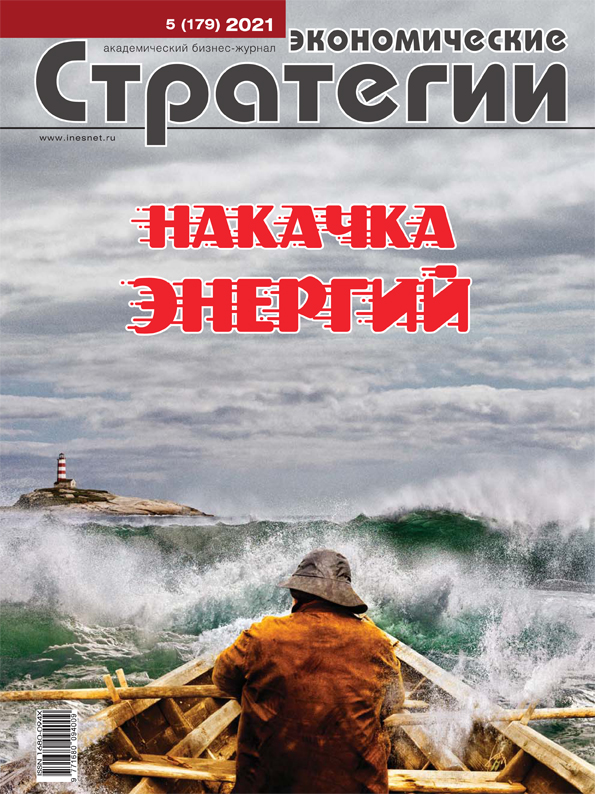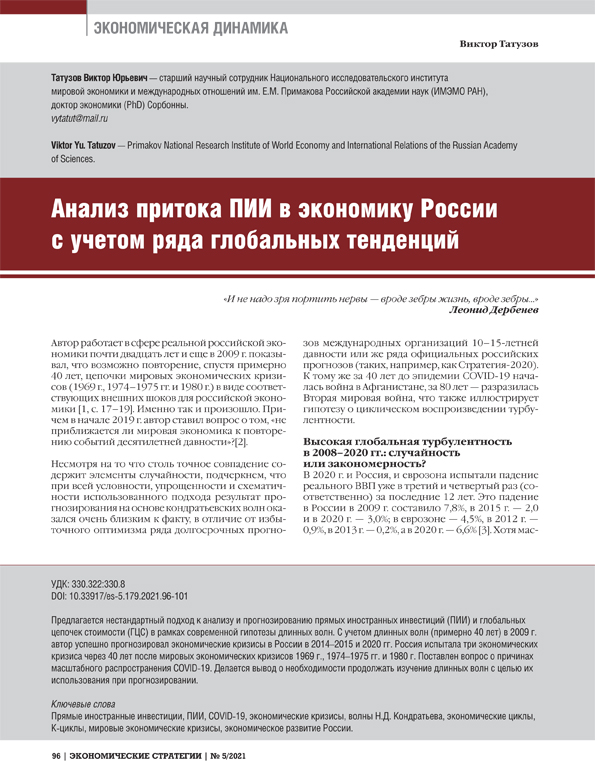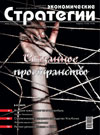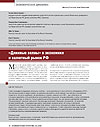Analasys of FDI Flow in Russian Economy Taking into Account Some Global Trends
DOI: https://doi.org/10.33917/es-5.179.2021.96-101
The author suggests a non-customary approach to the study and forecasting of the Foreign Direct Investment (FDI) and the Global Value Chains (GVC) — within the modern framework of Kondratieff long waves hypothesis. Taking into account long waves (about 40 years), in 2009 the author warned about the possible economic crises in Russia in 2014–2015,2020 and such crises actually happened. There were three economic crises in Russia — 40 years after the world economic crises of 1969, 1974–1975 and 1980. The question is raised about the large-scale spread of COVID-19. Also the author concludes that it is necessary to continue studying long waves approach with the aim of its use in forecasting.





